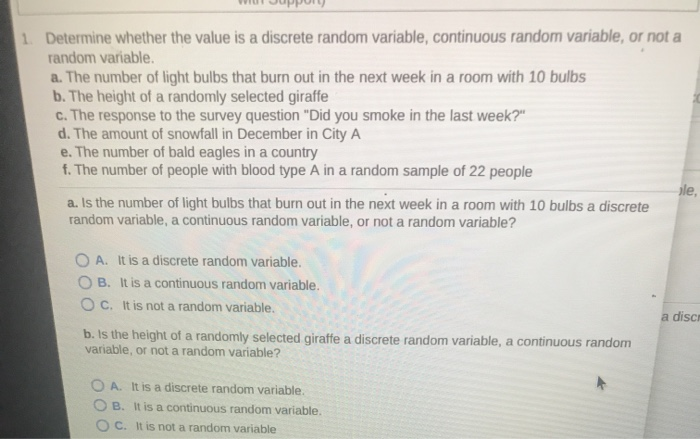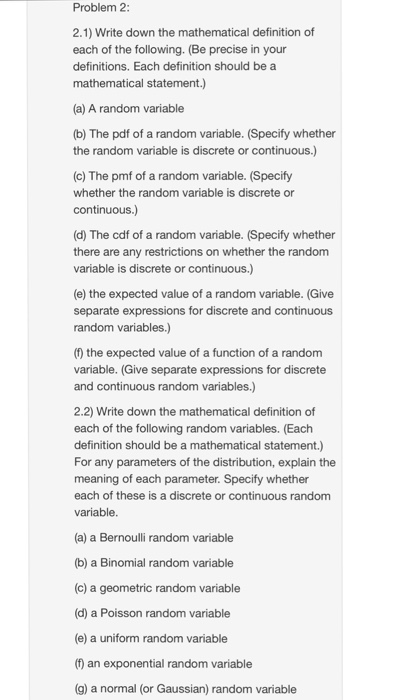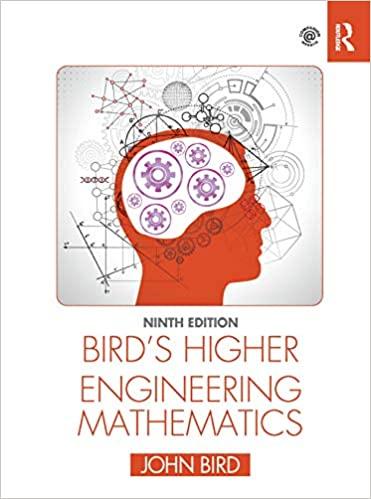Question:
In this year's new student registration, UMY received 3000 students obtained from the test waves I, II and III. The following is the student data that is differentiated based on origin area: Based on the 3000 students, 70% came from Java, and the rest from outside Java. Of the 3000 students, 50% are from wave I. Meanwhile, of all students from Java, there are a total of 1300 students from batch I, and 400 students from wave II. Of the total number, students who came from batch III only 500 people.
Based on this data, do the following commands:
a. If one person is chosen randomly, what is the probability of being selected a student who comes from Java or from wave III?
b. If 2 consecutive people will be selected without return, what is the probability that a student will be selected from wave I and another from wave II?
\f1. Determine whether the value is a discrete random variable, continuous random variable, or not a random variable. a. The number of light bulbs that burn out in the next week in a room with 10 bulbs b. The height of a randomly selected giraffe c. The response to the survey question "Did you smoke in the last week?" d. The amount of snowfall in December in City A e. The number of bald eagles in a country f. The number of people with blood type A in a random sample of 22 people ile, a. Is the number of light bulbs that burn out in the next week in a room with 10 bulbs a discrete random variable, a continuous random variable, or not a random variable? O A. It is a discrete random variable. O B. It is a continuous random variable. O C. It is not a random variable. a disc b. Is the height of a randomly selected giraffe a discrete random variable, a continuous random variable, or not a random variable? O A. It is a discrete random variable. O B. It is a continuous random variable. O C. It is not a random variablel. a) (Poisson superposition) Flies and wasps land on your dinner plate in the manner of inde- pendent Poisson processes with respective intensities 5L and pt. Show that the arrivals of ying objects form a Poisson process with intensity A + pt. b) (Poisson thinning) Insects land in the soup in the manner of a Poisson process with intensity 1, and each such insect is green with probability p, independently of the colours of all other insects. Show that the arrivals of green insects form a Poisson process with intensity 11p. Problem 2: 2.1) Write down the mathematical definition of each of the following. (Be precise in your definitions. Each definition should be a mathematical statement.) (a) A random variable (b) The pdf of a random variable. (Specify whether the random variable is discrete or continuous.) (c) The pmf of a random variable. (Specify whether the random variable is discrete or continuous.) (d) The cdf of a random variable. (Specify whether there are any restrictions on whether the random variable is discrete or continuous.) (e) the expected value of a random variable. (Give separate expressions for discrete and continuous random variables.) (f) the expected value of a function of a random variable. (Give separate expressions for discrete and continuous random variables.) 2.2) Write down the mathematical definition of each of the following random variables. (Each definition should be a mathematical statement.) For any parameters of the distribution, explain the meaning of each parameter. Specify whether each of these is a discrete or continuous random variable. (a) a Bernoulli random variable (b) a Binomial random variable (c) a geometric random variable (d) a Poisson random variable (e) a uniform random variable (f) an exponential random variable (g) a normal (or Gaussian) random variable










